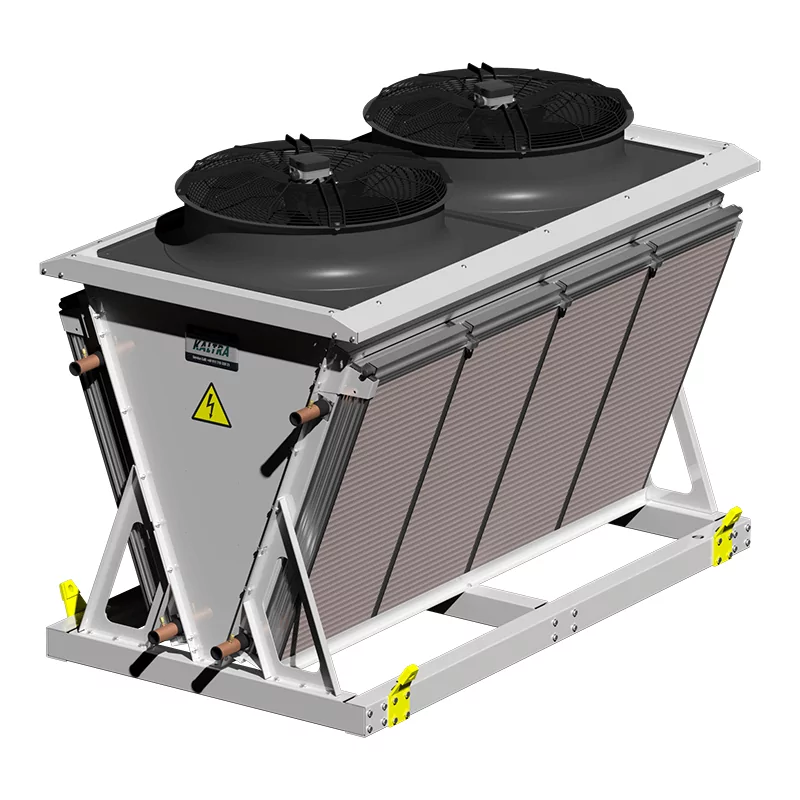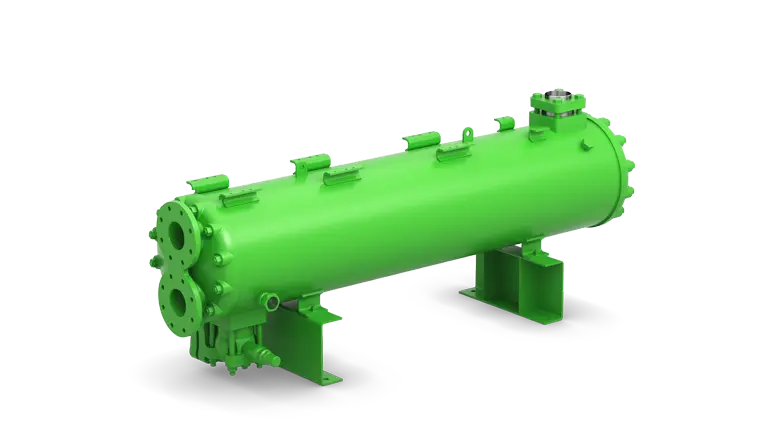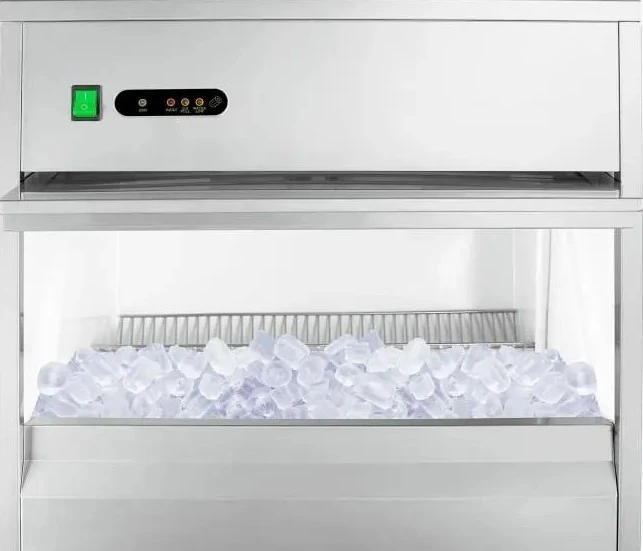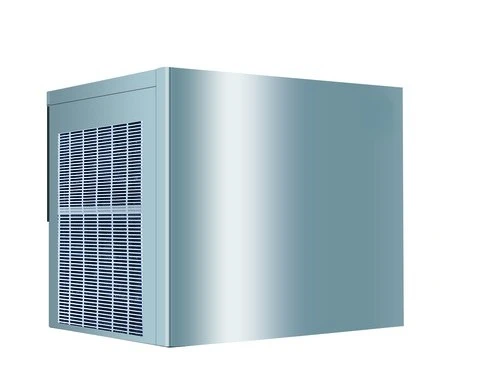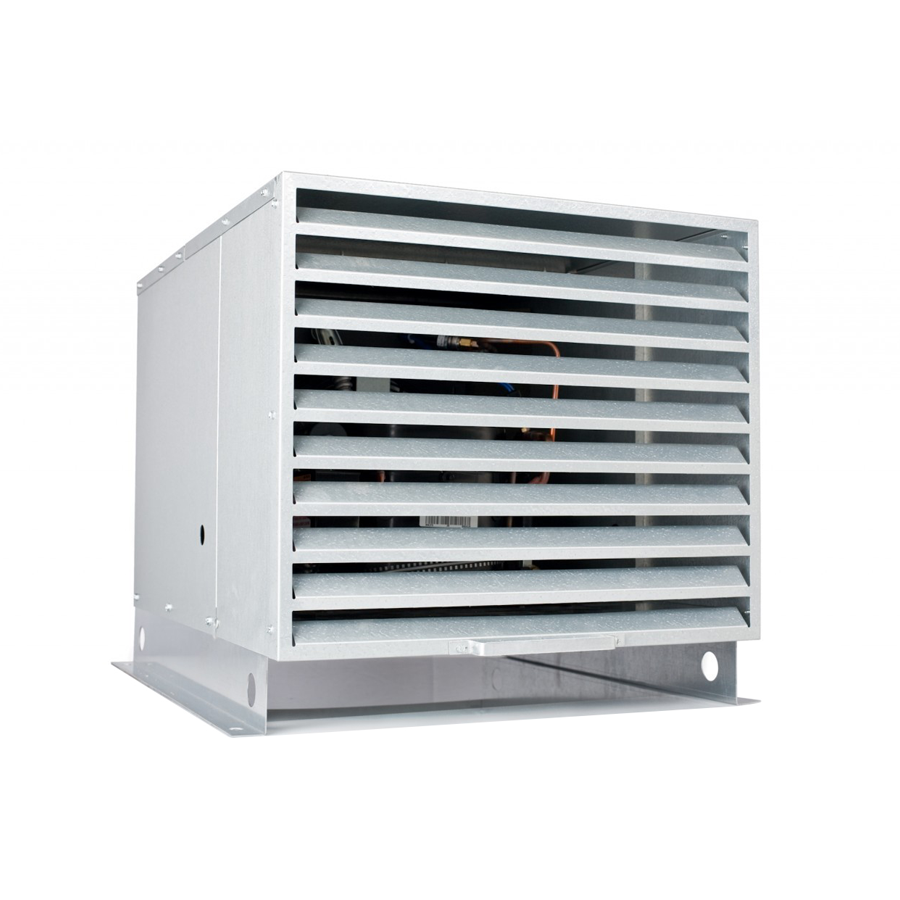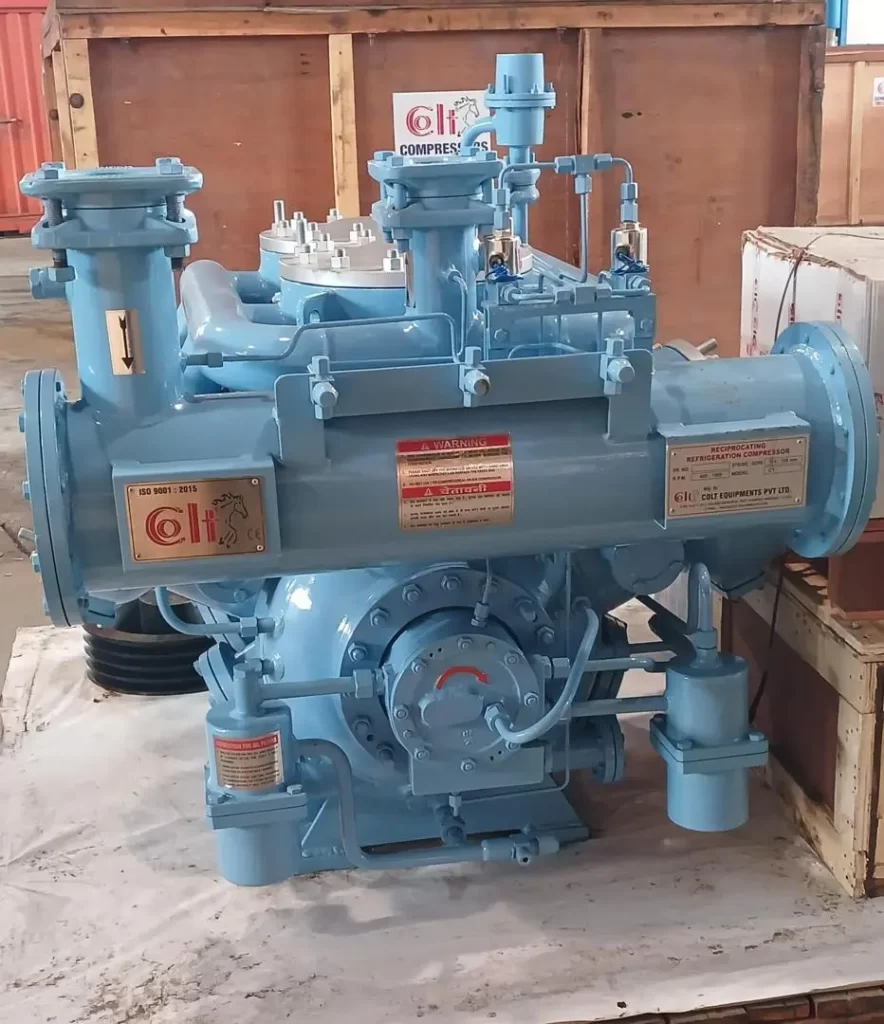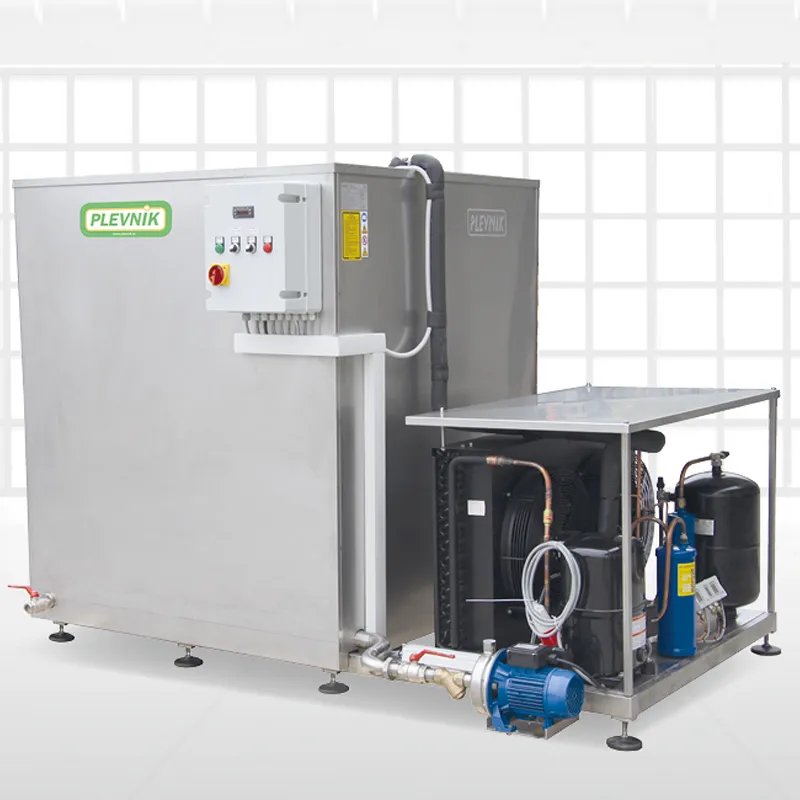
Ice Bank
Ice banks are critical systems in various industries, including food, pharmaceutical, and medical sectors, serving as cooling and temperature retention units in production and storage processes. These systems are widely used, particularly in the dairy and protein industries.
In the following article from the Tabadol Gostar Booran Group, we will explore the concept of ice banks, their various types, features, applications, and significance.
What Is Ice Bank?
Ice banks refer to systems in which ice is used as the primary medium for temperature reduction and energy storage. In these systems, ice functions as a thermal energy reservoir, utilized as needed to maintain the temperature of the environment or products.
These systems are typically used in industries that require cooling and long-term temperature maintenance.
The operation of an ice bank is such that ice is generated during the night or off-peak hours, and during the day, it is used to reduce the cooling load and maintain the required temperature. Therefore, these systems are particularly useful in regions with high temperatures and a constant need for cooling.
Components of an Ice Bank
Ice banks are composed of various components, each playing a vital role in the proper and efficient operation of the system. One of the key components is the ice generation system, which typically consists of condensers and evaporators.
This system produces ice in varying volumes and transfers it to storage tanks. Therefore, ice storage tanks are another essential component of the ice bank, designed to store the generated ice for use when needed. These tanks must have sufficient capacity for ice storage and ensure accessibility over time.
Temperature control equipment is another critical component of ice banks. This includes sensors, thermostats, and automated systems that continuously monitor the temperature and make necessary adjustments when required.
Pumping and ice distribution systems are also essential for transferring ice from the storage tanks to various parts of the system. These pumps and pipes evenly distribute the ice to ensure effective cooling across all required areas.
Finally, there are monitoring systems designed to ensure precise temperature control, proper functioning of other components, and prevention of any failures or malfunctions within the system. These systems typically utilize displays and automated alerts to continuously monitor the status of the ice bank.
Types of Ice Banks Based on Refrigerant Type
Ice banks are manufactured in various types based on the refrigerant gas used, each designed for specific applications. Therefore, selecting the appropriate type of ice bank should be based on the industry and its specific cooling requirements.
Below, we will examine some of the most common types of ice banks.
Ammonia Ice Bank
Ammonia ice banks are a type of cooling system that uses ammonia as the refrigerant. These ice banks are typically used in large-scale industries, particularly in the food and pharmaceutical sectors.
One of the main advantages of ammonia ice banks is their high cooling efficiency. Due to the use of ammonia, these systems can effectively store energy and utilize it for cooling when needed.
Additionally, ammonia ice banks generally have lower operational costs, and since ammonia is a natural refrigerant, they have a lower environmental impact compared to traditional refrigerants. These features make ammonia ice banks—equipped with ammonia evaporators—a suitable choice for energy-intensive industries.
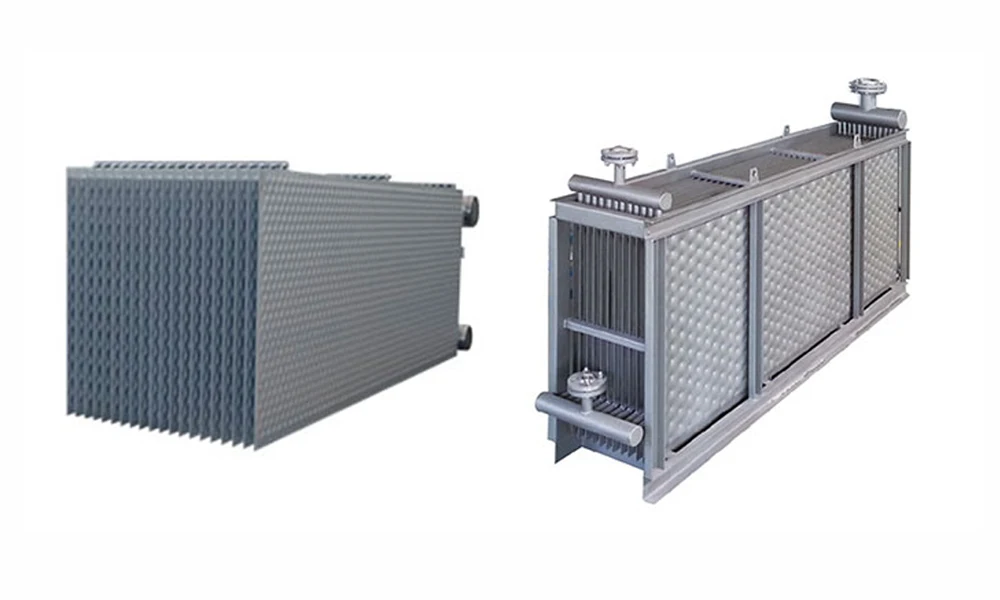
Freon Ice Bank
Freon ice banks are another type of cooling system that use Freon gas as the refrigerant instead of ammonia.
Freon, as a chemical refrigerant, possesses specific properties that make Freon ice banks more popular in small to medium-sized industries. Unlike ammonia ice banks, these systems typically require less maintenance and offer a higher level of safety for operators.
Since Freon is less hazardous and operates at lower pressures, Freon ice banks equipped with Freon evaporators are a suitable choice for industries with strict safety requirements. These systems also operate at lower temperatures, making them effective for specialized applications that require enhanced cooling performance.
Comparison of Ammonia and Freon Ice Banks
Each of the common types ammonia and freon ice banks offers advantages for specific applications.
For example, ammonia ice banks, due to their high cooling capacity, energy efficiency, and low operating costs, are primarily used in large-scale industries such as food processing, petrochemicals, and industrial refrigeration.
In contrast, Freon ice banks are more popular in small and medium-sized industries due to their high safety levels and ease of installation and maintenance.
The table below provides a clear and comprehensive comparison between these two types of ice banks.
Feature | Freon Ice Bank | Ammonia Ice Bank |
|---|---|---|
Capacity | Lower | Higher |
Energy Efficiency | Lower | Higher |
Operating Cost | Higher | Lower |
Safety | Higher | Lower |
Ease of Installation and Maintenance | Higher | Lower |
Environmental Impact | Higher | Lower |
Types of Ice Banks Based on Application
If we classify ice banks based on their industrial applications, they can be divided into ice banks for the food industry, pharmaceutical industry, chemical industry, and other sectors.
Food Industry Ice Bank
In the food industry, ice banks play a crucial role in preserving product quality and freshness. These systems generate ice during off-peak hours, when electricity costs are lower, converting water into ice and storing it in the ice bank reservoir.
Use of Ice Banks in the Food Industry
- By providing consistent cooling and preventing temperature fluctuations, the quality of food products is preserved.
- By utilizing lower-cost energy during off-peak hours, energy expenses are reduced.
- By reducing the workload on refrigeration equipment, their operational lifespan is extended.
- With precise temperature control, product spoilage is prevented.
Dairy Industry Ice Bank
These ice banks are a specialized type used exclusively for dairy products such as milk or ice cream. They help maintain a stable temperature for dairy items in cold storage and, by storing excess cooling energy at night or during periods of low demand, contribute to reducing energy costs.
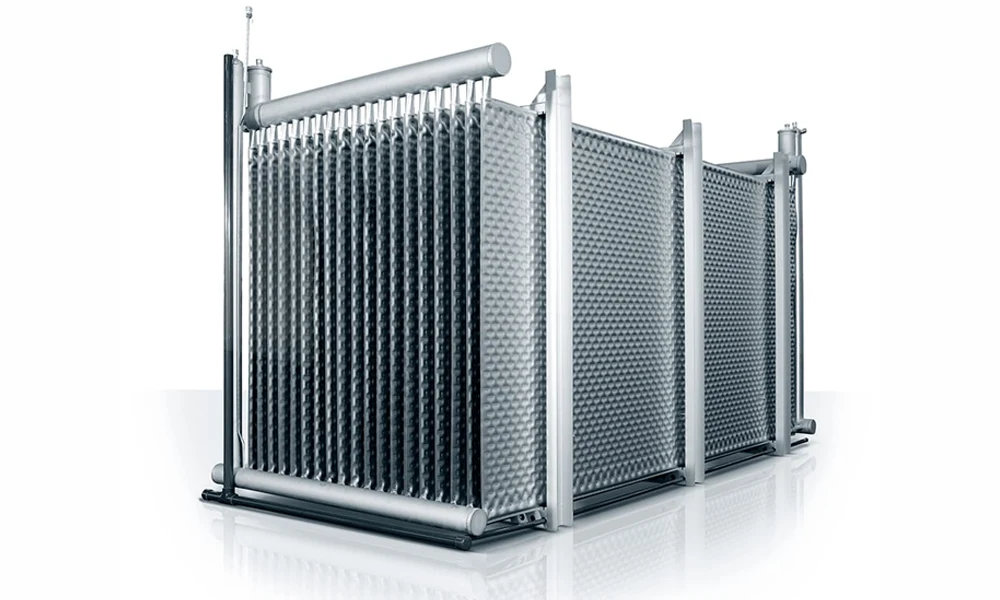
Pharmaceutical Industry Ice Bank
Many medications, especially biologics and vaccines, are highly sensitive to temperature fluctuations. Any increase or decrease in temperature can reduce their effectiveness, render them inactive, or even make them hazardous. Therefore, the pharmaceutical industry is required to adhere to extremely strict standards for drug storage, as any deviation from these standards can lead to serious consequences.
For these reasons, ice banks are widely used in the pharmaceutical industry. By maintaining a stable and optimal temperature, they ensure the quality and stability of medications and minimize pharmaceutical losses by preventing spoilage and degradation of drug efficacy.
Applications of Ice Banks in the Pharmaceutical Industry
- To maintain a stable and optimal temperature in pharmaceutical storage facilities.
- To create a controlled temperature environment in clean rooms used for the production of sterile pharmaceuticals.
- To maintain appropriate temperatures during the transportation of pharmaceuticals.
Ice Bank in the Chemical Industry
Many chemical reactions require precise temperature control. Ice banks provide the necessary cooling to help regulate reaction temperatures accurately. In some chemical processes, equipment generates heat; thus, ice banks prevent equipment damage by cooling them and enhancing overall process efficiency.
Another example of ice bank applications in the chemical industry is in distillation processes. During distillation, cooling of vapors is required to separate the components of a mixture. Ice banks perform this function with high efficiency.
Ice Bank in HVAC Systems
An ice bank chiller is a cooling system that operates using ice and industrial chillers. In this system, water acts as a cooling medium alongside ice to reduce temperature and store energy. These systems are typically used in large-scale industries where continuous and large-capacity cooling is required.
Chiller ice banks are used in industrial HVAC systems as well as in factories and cold storage facilities. They are specifically designed to reduce cooling costs in large, high-consumption environments.
Ice Bank Price
The price of ice banks depends on various factors, including the type of system and refrigerant gas, capacity, brand, design, and specific features of the unit.
For example, ammonia ice banks typically used in large-scale industries—have a higher initial cost. However, due to their high energy efficiency and longer lifespan, they prove to be more cost-effective in the long run, resulting in lower operational expenses for users.
In contrast, Freon ice banks typically designed for smaller-scale and medium-sized applications—have a lower initial cost. Due to their simpler design and the use of Freon gas, they are more affordable upfront. However, it’s important to note that over the long term, the operational costs of Freon ice banks may rise due to higher energy consumption. Below, we will examine the key factors influencing ice bank pricing.

1. Type of Cooling System
- Ammonia Ice Banks: Higher initial cost but greater energy efficiency, longer lifespan, and lower operational expenses.
- Freon Ice Banks: Lower initial cost but higher energy consumption and greater long-term operational expenses.
2. Ice Storage Capacity
- The greater the ice storage capacity, the higher the initial cost of the ice bank.
- Larger capacities require more advanced equipment and control systems, which significantly impact the final price.
3. Brand and Build Quality
- Reputable brands typically use higher-quality materials, enhancing the durability and performance of the unit.
- Well-known brands may come with a higher price tag, but they generally offer lower maintenance costs over the long term.
4. Raw Materials and Body Material
- Ice bank bodies are typically made from stainless steel or galvanized sheets. The use of higher-quality materials increases the cost but also enhances the durability and lifespan of the system.
- The use of higher-quality insulation to minimize energy loss also affects the final price.
5. Installation and Commissioning Costs
- The final price also includes installation and commissioning costs, which vary depending on the system’s complexity and environmental conditions.
- The use of additional equipment, such as specialized pumps or smart control systems, increases auxiliary costs.
6. Maintenance Conditions and After-Sales Services
- Brands that offer extended warranties and comprehensive after-sales services typically have higher prices, but in return, they incur lower repair and maintenance costs over time.
- The availability of spare parts and the associated repair costs also play a role in determining the price of ice banks.
Ice Bank Design
Ice bank design is a critical phase in the manufacturing and installation process of these cooling systems. The design must ensure not only high efficiency but also optimization for energy savings and reduction of operational costs.
One of the most important aspects of ice bank design is selecting the appropriate cooling capacity. The cooling capacity must be precisely matched to the industrial or commercial requirements, as improper sizing can lead to increased energy consumption or insufficient cooling performance.
Selecting the appropriate refrigerant for the ice bank is of paramount importance. Refrigerants are typically chosen based on factors such as efficiency, safety, and environmental impact. In ice bank design, it is essential to consider that the correct refrigerant selection can significantly influence system performance and operating costs.
The structure of the ice maker and storage equipment are also critical factors in ice bank design. Ice makers must be designed to produce ice in the appropriate volume and quality required for system operation.
Additionally, storage equipment must be constructed to maintain the produced ice under optimal conditions for extended periods.
Ultimately, ice bank design must not only address these technical aspects but also minimize the system’s operational costs.
Therefore, selecting high-quality components and incorporating advanced technologies in the design can enhance efficiency and reduce long-term costs.
Used Ice Banks
Used ice banks are an economical option for purchasing cooling systems, appealing to businesses seeking to reduce initial costs. These systems are generally offered at lower prices than new units and can be suitable for small to medium-sized industries or businesses looking for cost-effective cooling solutions.
However, purchasing a used ice bank requires greater caution, as some components may be worn out and require more maintenance. Additionally, system parts such as compressors, condensers, pipes, and pumps may need replacement or repair after prolonged use, which can incur additional costs.
To ensure proper functioning and longevity of a used ice bank, it is recommended that the system undergo a thorough inspection by technical experts before purchase. This evaluation should include assessing the condition of various components, the extent of wear, and any repair requirements.
If the system is in good condition and all components function properly, a used ice bank can be a cost-effective option that not only reduces initial expenses but also supports energy conservation and lowers operational costs.
Additionally, some sellers of used ice banks may offer warranties or after-sales services, which can increase your confidence in the purchase and reduce potential risks.
Ice Bank Purchase Guide
Ice banks are essential tools in many industries, used for temperature maintenance and energy consumption reduction.
Selecting the appropriate type of ice bank depends on the specific needs of each industry. In this article, we reviewed the various types of ice banks, their applications, and significance. We hope the information provided helps you make an informed decision when choosing the right cooling system for your business.
Table of Contents
Our experts are here to support you.
If you need consultation or wish to start a project, please contact us using the form below. Our support team is proudly ready to address all your needs.
FAQ ; Clear Answers for You
Answers to the most frequently asked questions you pose to Tabadol Gostar Booran experts:
1. چگونه میتوانیم متوجه شویم که آیس بانک برای کسبوکارمان مناسب است؟
To determine whether an ice bank is suitable for your business, you must first assess your cooling requirements. Evaluate whether you need continuous cooling systems or energy storage solutions, and analyze your energy consumption volume. Additionally, consider which type of refrigerant (ammonia or Freon) offers the best efficiency for your business. Our consultants are available to assist you in this process and recommend the most suitable options.
2. آیا آیس بانکها فقط در مناطق گرم کاربرد دارند؟
Ice banks are more commonly used in hot regions than in others, but this does not mean they are exclusive to those areas. They are particularly beneficial in industries requiring low temperatures and stable temperature maintenance for products. Even in colder regions, if your business needs to maintain a constant temperature for temperature-sensitive products, ice banks can serve as an economical and efficient solution.
3. آیس بانکهای جدید به مراتب بهتر از سیستمهای قدیمی هستند؟
Newer ice banks typically incorporate more advanced and efficient technologies that enhance their performance. These systems usually consume less energy and can store greater amounts of energy. However, if older systems are properly maintained and repaired, they may still operate effectively. Nonetheless, for maximizing cooling capacity and reducing costs—especially in larger industries—selecting a new system is recommended.
4. آیا آیس بانکها بهصورت سفارشی ساخته میشوند؟
Yes, many ice banks are custom-designed and manufactured. Custom ice bank designs are typically employed for specialized industries that require specific features. For example, in industries needing precise cooling or operating in unique environments, ice banks can be tailored according to the dimensions and particular conditions of the site. Tabdol Gostar Booran consultants can assist you in this area and provide a tailored design to meet your specific needs.
5. آیا استفاده از آیس بانک برای کارخانههای کوچک بهصرفه است؟
For small factories, ice banks can be an effective solution to reduce cooling costs, especially when energy consumption during peak hours is high. By using ice banks, energy is stored during off-peak hours and utilized for cooling during peak demand periods, which can help reduce overall costs. Our consultants can analyze the specific needs of your factory to determine whether investing in an ice bank is cost-effective.

